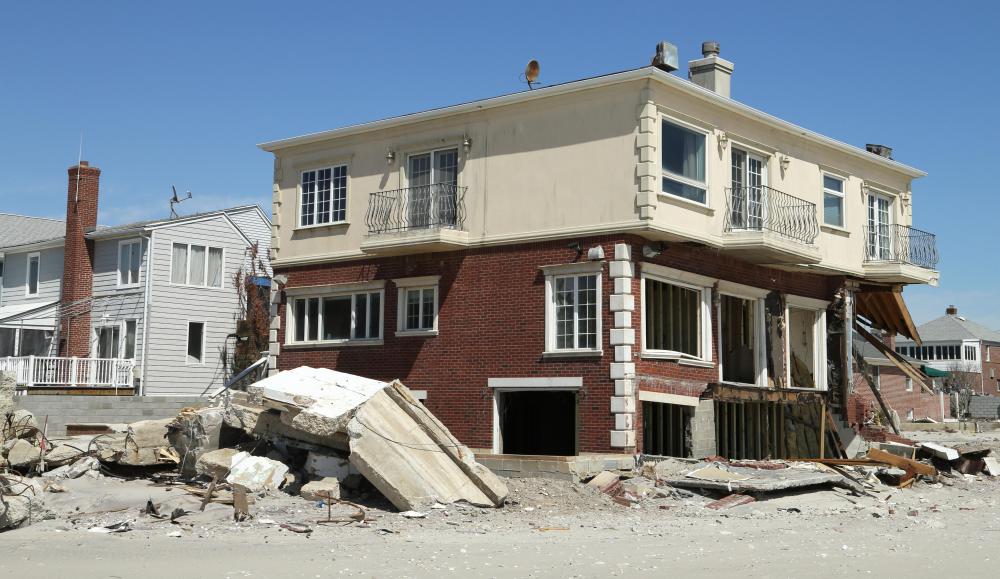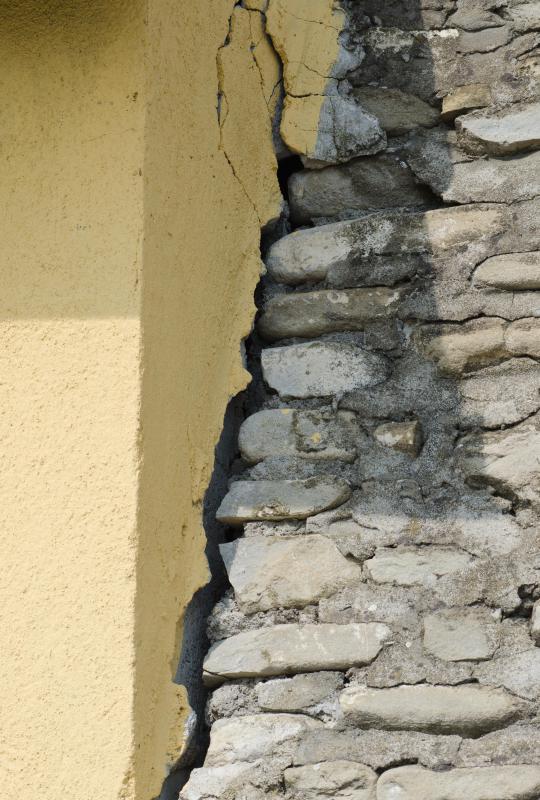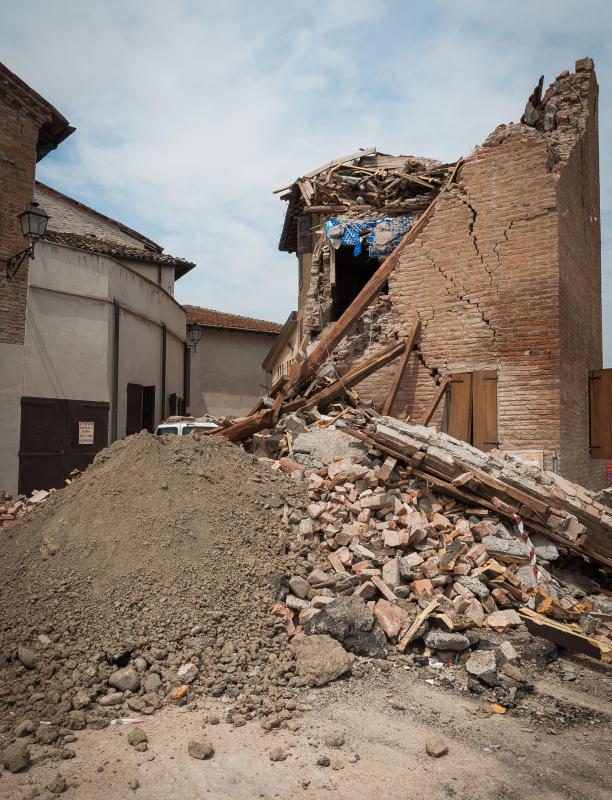At AllThingsNature, we're committed to delivering accurate, trustworthy information. Our expert-authored content is rigorously fact-checked and sourced from credible authorities. Discover how we uphold the highest standards in providing you with reliable knowledge.
What is the Richter Scale?
The Richter scale, officially called the "Richter Magnitude Scale," is a numerical value used to measure the power of earthquakes. It is a logarithmic scale based on the amplitude of waves recorded by a seismograph. This means that each whole number increase on the scale corresponds to an absolute increase by a factor of ten. Earthquakes measured at less than about 2.0 on the Richter scale are not very serious, and can barely even be measured, much less felt. An earthquake is usually considered much more serious, and is felt by most people, once it hits about 5.0.
What the Numbers Mean

Each number of the Richter scale is equal to a ten-fold increase in the magnitude of an earthquake. In other words, an earthquake measuring 6.0 on this scale has a magnitude ten times greater than a 5.0 quake. One whole number increase also indicates that about 31 times more energy was released during a quake.
| Magnitude | Class | Effects |
|---|---|---|
| 2.0 or less | Micro | Cannot be felt. |
| 2.1 - 3.9 | Minor | Many are not felt, although those at the higher end may be. May cause very minor damage. |
| 4.0 - 4.9 | Light | Can be felt. General shaking, but usually only minor damage. |
| 5.0 - 5.9 | Moderate | Can cause slight to moderate damage to structures. |
| 6.0 - 6.9 | Strong | Can cause significant damage, especially in populated areas. |
| 7.0 - 7.9 | Major | Causes serious, widespread damage. |
| 8.0 - 9.9 | Great | Extremely destructive. Can completely destroy entire communities. |
It is theoretically possible to have an earthquake of 10.0 or stronger, although this has never been recorded. Such a quake would be classified as Massive, and cause devastation across a very wide area.
Magnitude vs. Damage

It is important to distinguish between the magnitude of an earthquake and damage it causes. Although higher numbers usually indicate more damage — and such earthquakes are often described in terms of damage — the Richter scale cannot be used as a direct measurement of the destructive force of a quake. Many factors contribute to the amount of destruction and loss of life caused by an earthquake, including the population of the area, the type of building construction, the type of earthquake, and how deep the quake is. A 5.0 magnitude quake hitting a densely populated area with old or poorly constructed buildings, for example, is likely to do more damage than a 7.0 earthquake that occurs in a remote region with few people or structures.
How Earthquakes Are Recorded

Seismographs record the magnitude of an earthquake. These devices detect waves traveling through the earth and portray them as a series of lines that move up and down. Greater movement in the earth creates more extreme differences — or amplitude — in the lines that are recorded, creating a visual representation of the earthquake's waves.
The Richter scale is based on measuring the intensity of this difference. Higher numbers come from more extreme recorded patterns. In most cases, the seismograph isn't actually at the epicenter of an earthquake, however; it's often at least some distance away from the place where the quake actually occurs. Based on this distance, the machine is specially calibrated so that scientists can determine what the magnitude that it recorded would have been if it was actually located at the center of the quake.
Limitations

News releases about an earthquake can be confusing, as evaluating the actual magnitude often takes time. A preliminary value is usually released to provide an approximation for the power of the quake, but this does not always match the official value released after the data is fully analyzed.
The Richter Magnitude Scale was developed in 1935, and it does have some additional limitations. Earthquakes with a magnitude above about 8.0 cannot be measured very accurately using this scale. While there is no upper limit, measurements are not as precise because of how they are made. The scale uses the size of the largest waves recorded by a seismograph, which ignores the smaller but steadier waves created by a quake. These smaller types of waves are more likely to cause structural damage during an earthquake since they tend to occur for longer periods of time.
Alternative Scales

To accurately record Great earthquakes, a system called the moment magnitude scale (MMS) is often used. This scale is based on all waves created in an earthquake, including those that may take almost two minutes to reach the device that records them. Although most current earthquakes are actually measured by this scale, they are still frequently described as registering some number on the Richter scale.
Another way to measure earthquakes is with the Mercalli Intensity scale, which measures how the surface of the earth reacts to the movement. This scale has 12 levels, written in Roman numerals, and was created to be easier for the average person to understand. For example, an earthquake that rates a III on the Mercalli scale feels similar to the vibrations caused when a large truck passes by, and can be felt, but is not always recognized as an earthquake. A quake rated a VI is clearly felt, moves furniture around, and can even knock some plaster from walls, but does not cause major damage. A IX causes considerable damage, and may cause buildings to partially collapse; a XII, the highest rating, indicates a quake that throws items into the air and causes major destruction.
Frequently Asked Questions
What is the Richter Scale?
The Richter Scale is a logarithmic scale used to quantify the size or energy released by an earthquake. Developed by Charles F. Richter in 1935, it measures the amplitude of seismic waves recorded by seismographs. Each whole number increase on the scale represents a tenfold increase in measured amplitude and roughly 31.6 times more energy release.
How does the Richter Scale measure earthquakes?
Earthquakes are measured on the Richter Scale by analyzing the seismic waves they produce. A seismograph records these waves and the maximum amplitude (height) of the waves is used to calculate the magnitude of the earthquake on the Richter Scale. This magnitude is a representation of the energy released at the earthquake's source.
Is the Richter Scale still used today?
While the Richter Scale was revolutionary in its time, it has largely been replaced by the Moment Magnitude Scale (Mw) for most scientific purposes. The Moment Magnitude Scale provides a more accurate measure of an earthquake's size across a wider range of quake types and sizes, especially for very large earthquakes.
What is the difference between the Richter Scale and the Moment Magnitude Scale?
The Richter Scale measures the amplitude of seismic waves, which can be less accurate for distant or very large earthquakes. The Moment Magnitude Scale, however, measures the actual energy released by an earthquake, taking into account the seismic moment (total rupture area, average slip on the fault, and the rigidity of the rocks). This makes it more universally applicable and accurate.
Can the Richter Scale predict future earthquakes?
No, the Richter Scale cannot predict future earthquakes. It is solely a measurement tool that quantifies the energy released by an earthquake after it occurs. Earthquake prediction involves a variety of factors and remains a complex challenge in earth science, with no reliable method currently available for precise predictions.
What does a high magnitude on the Richter Scale indicate about an earthquake?
A high magnitude on the Richter Scale indicates a powerful earthquake that has released a significant amount of energy. For instance, a magnitude 7 earthquake releases over 30 times more energy than a magnitude 6 earthquake. High-magnitude earthquakes can cause widespread destruction, especially if they occur near populated areas.
AS FEATURED ON:
AS FEATURED ON:















Discussion Comments
Don't think they use the Richter scale anymore. the moment magnitude scale has been used as its successor since 1979.
this was excellent! it expanded my knowledge to the maximum! cheers.
thanks. the info was so helpful.
haiti was 7.9 i believe. chile was 8.8.
i did a project on earthquakes and this really helped me. thank you.
how did krakatoa happen?
It was cool info, so thanks.
thanks for all the info.
Wow that's a lot of info but i bet there is more. I'm doing a project for school and if i was to write something as good as that. they would think i cheated so i need something more my age to learn off but thanks for having this.
how big was the earthquake in haiti using the richter scale?
How did the earthquake in Haiti occur? Where are the fault zones?
Richter scale first began to be used in 1935 when Charles Richter developed a way to measure the magnitude of a earthquake.
Post your comments